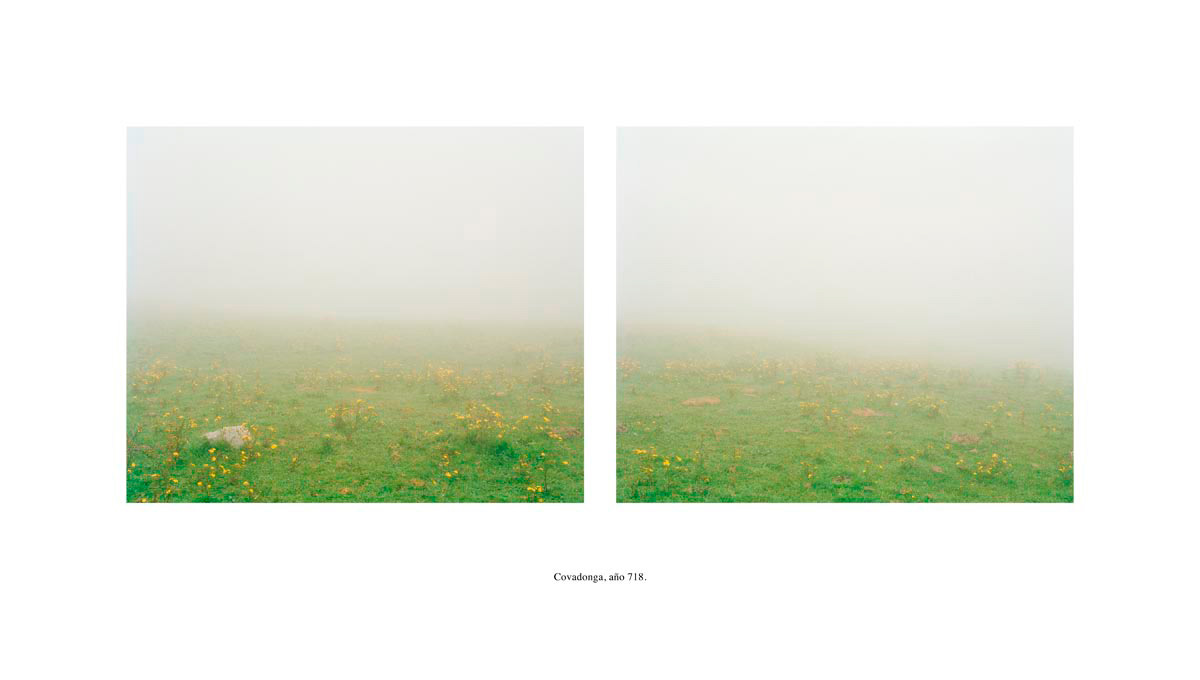Communication with the purpose of culturally promoting artists included in the Fundación María Cristina Masaveu Peterson Collection, works protected by intellectual property rights. Their total or partial reproduction or processing by any means, or their transmission or cession in any form is forbidden without the authorisation of the holder of the rights to the works
© Bleda y Rosa, VEGAP, Madrid 2024
Covadonga, Año 718. Covadonga 1996
TECHNICAL DATA
Authors: Bleda and Rosa. María Bleda (Castellón, 1969) and José María Rosa (Albacete, 1970)
Title: Covadonga, año 718. Covadonga 1996 (Covadonga, year 718. Covadonga 1996)
Year: 1996
Technique: c-print on aluminum
Size: 85 x 150 cm. (diptych)
Edition: 9/10
The works carried out jointly by María Bleda and José María Rosa (Bleda and Rosa) usually start from beautiful landscapes, chosen as insinuating elements to propose a deep conceptual reflection about the passage of time. This work was acquired by the María Cristina Masaveu Peterson Foundation at Madrid’s International Contemporary Art Fair (ARCO) in 2009 and belongs to the series “Campos de Batalla. España” (Battlefields. Spain), one of the biggest award winners of this artistic pair, awarded National Photography Prize from the Ministry of Culture in 2008.
The snapshots that gave rise to this composition were taken in the parish of Covadonga (Cangas de Onís, Asturias) near the area known today as Repelao, where it is believed that in the year 718, Pelayo was crowned King and incited the villagers to revolt against the Muslim invaders; in the Battle of Covadonga (722) the Christians defeated the troops of Al-Andalus and the period known as the Reconquista (Reconquest) began. The event has been widely discussed in historiography, as an example of the insurrection that gave rise to the independent kingdom of Asturias and, later, to other Christian kingdoms, culminating in the formation of the Kingdom of Spain.
Like the other work by Bleda and Rosa in the FMCMP Contemporary Art Collection, this piece belongs to a long process (1994-1997) that maintains a stylistic consistency and adopts a neutral point of view to underline the anachronism between the moment in which the image was taken and the historical event to which it alludes. The artists involve us in another historical complaint; in the historical paintings of battles, the perspective, location and even the landscape were modified, extolling details unrelated to the truly verifiable historical facts.

